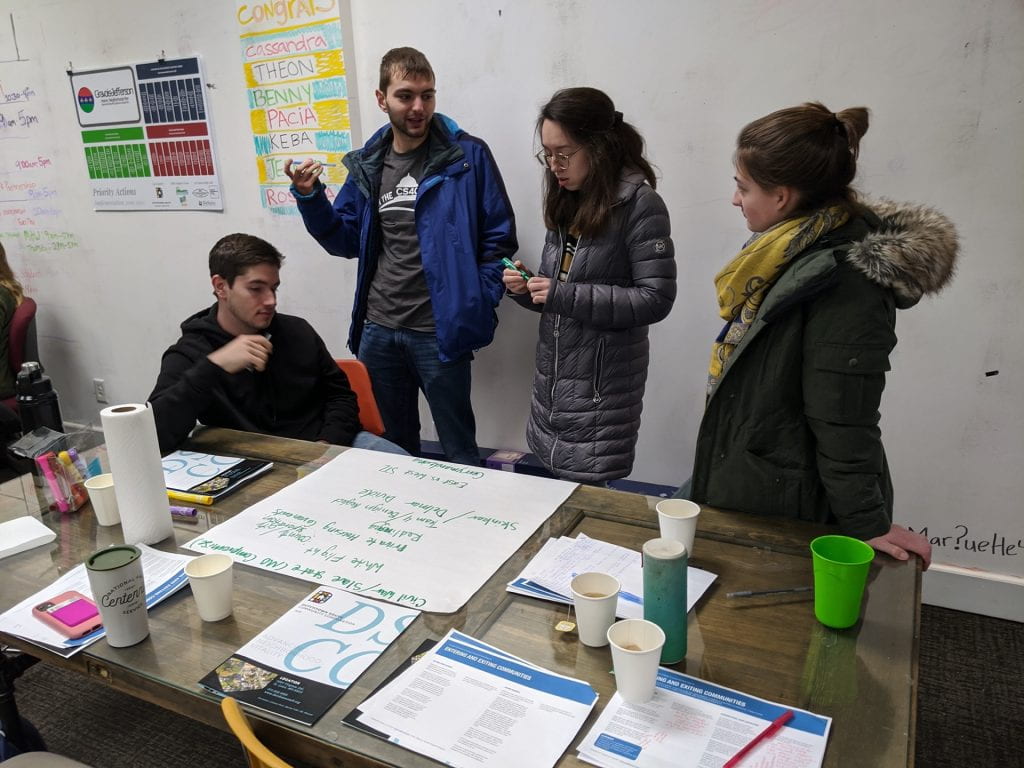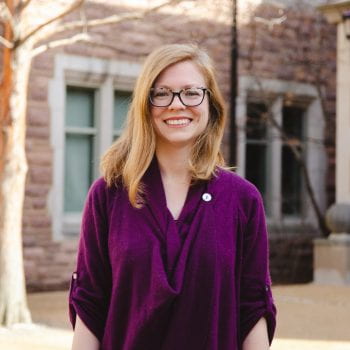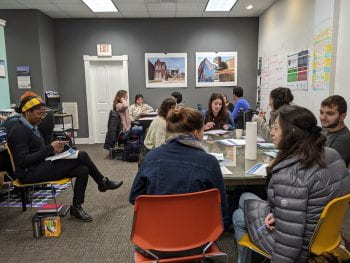
The Sustainability Exchange is a unique Community Engaged Course that invites interdisciplinary teams of students to tackle real-world energy, environmental, and sustainability problems through an experiential form of education. Guided by a team of faculty advisors from across the university, students collaborate on projects with partners on- or off-campus to explore problems requiring innovative methods and solutions.
The goal of this course is not for students to enter communities and propose solutions independently. Collaboration lies at the heart of the Sustainability Exchange—between students and students, students and faculty, and, most crucially, students and community partners. The Sustainability Exchange aims to educate students in how to work alongside community members and organizations in order to achieve a common goal. Each semester, the program kicks off with a retreat that involves a range of workshops and hands-on learning experiences to prepare students to work with partners in a way that is respectful, responsible, and mutually beneficial.
Dutchtown South Community Corporation, a longtime partner of the university on several environmental projects, hosted the Sustainability Exchange retreat in spring 2020. Students used public transit to travel to and from the retreat. Stefani Weeden-Smith, Assistant Director for Community Engagement at the Gephardt Institute, opened the day with a workshop on entering and exiting communities. The students participated in a gallery walk featuring excerpts of articles that challenged common narratives about environmentalism and race. Tosha Phonix, Food Justice Organizer with Missouri Coalition for the Environment, presented to the group on the history of environmental justice in the United States. The day ended with a workshop on the history of redlining and racial zoning policies that institutionalized and continue to uphold racial segregation in St. Louis.

Carolyn Cosgrove-Payne (pictured left) is the co-director of the Sustainability Exchange and Community Engagement Coordinator for Environmental Studies as well as the principal organizer of the retreat. She explains to students that the Sustainability Exchange is not like other courses that they have taken. “Students have very few traditional assignments or tests, and a great deal of autonomy in what their final projects look like,” she says. “However, with this power comes responsibility. Students are not only responsible for their own grades—they are responsible for ensuring that a real-world project gets done, that they live up to the expectations of the community they’re working with, and that the next group of students working on their project will have what they need to be successful.” The retreat is one of the steps taken by the directors of the program to ensure that students are prepared for these responsibilities.
Carolyn sees the goals of the retreat as two-fold: “First, we want students to walk away with an increased understanding of racial inequities and segregation in St. Louis, and of the racial history of environmentalism in the United States. Many students interested in environmental work do not learn this context, and it can be paradigm-shifting. Second, we want students to be able to apply best practices of entering and exiting communities to their projects, including how to address their own limitations, set expectations, communicate well, and consistently look at their project through a racial equity lens, asking who may benefit and who may be harmed by their project.”

These two aims are, of course, interconnected. Stefani Weeden-Smith emphasizes in her workshops on the topic that entering and exiting communities well involves doing the work to understand those communities, both their past and present. About her presentation to the Sustainability Exchange students, she says, “My hope is to encourage reflection and inquiry as each student takes into account the historical context of the community they are entering. And I hope they begin to question why or why not community members are engaging in sustainable practices. It isn’t always what they imagined, but there may be some considerable systemic barriers to their engagement.”
The Sustainability Exchange engages students in the St. Louis community in deep and lasting ways. Working side by side with community organizations on a shared passion project builds meaningful bonds and yields high-quality, relevant results.
Learn more about the Sustainability Exchange, including past projects, here. Community organizations and faculty members can submit project proposals here.